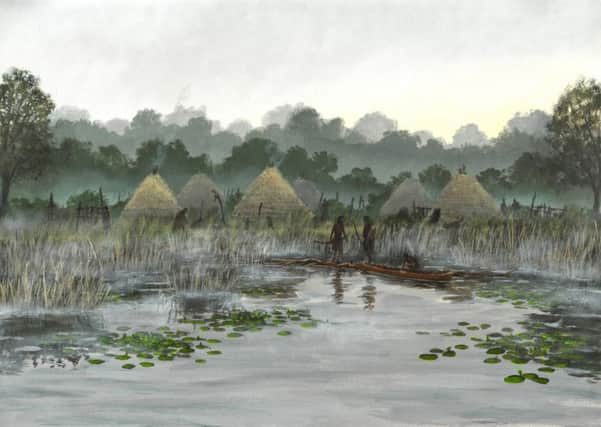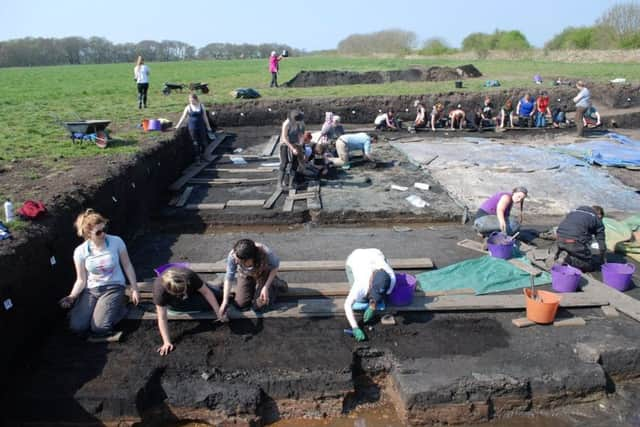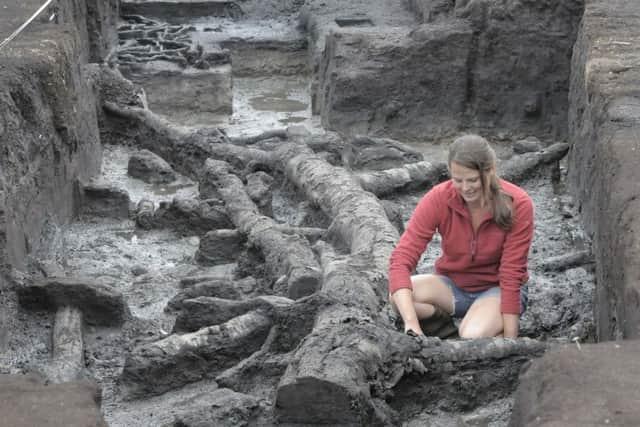The earth could literally freeze over before Stone Age northerners would take a snow day


New research has revealed that at Star Carr, inland from Scarborough, the middle stone-age inhabitants at the end of the last ice age were probably impervious to the plummeting temperatures around them.
Not even a climate drop severe and dramatic enough to halt the development of woodland had any substantial impact on their activity.
Advertisement
Hide AdAdvertisement
Hide AdThe North Yorkshire archaeological site, which dates from around 9,000 BC and is considered one of the most significant in Europe, has given up its latest secrets after years of digging and laboratory work.


Researchers say the findings have shed new light on the sensitivity of primitive “hunter-gatherer” societies to environmental change.
At Star Carr – where the cold snap lasted more than a century and where average temperatures dropped by more than three degrees in the space of a decade – the peat bogs have thrown up preserved examples not only of tools and artefacts, but of organic remains that scientists have been able to date and then compare with samples from other periods.
Experts from the University of York and Royal Holloway University of London, who picked through the layers of wetland deposits at the edge of the former lake basin in the Vale of Pickering, found evidence of houses built as large wooden platforms on the lake’s edge.
Advertisement
Hide AdAdvertisement
Hide AdNicky Milner, a professor at York, said: “We have been working at Star Carr for about 15 years and the site has produced an incredibly rare glimpse into the world of our Mesolithic ancestors who lived at the end of the ice age, about 11,000 years ago.


“Putting this archaeological data into the context of the climate and environment is very exciting and shows that we need to keep an open mind when thinking about the effects of extreme climate on early populations.”
She added: “We’re dealing with a very small piece of the jigsaw. We don’t know an awful lot about these people but we have some insights into their behaviour.
“We do know that they made houses on the dry land and that they had fire and the skills to keep warm.”
Advertisement
Hide AdAdvertisement
Hide AdShe said the deer skulls that had also been unearthed, which were once used as headdresses, may have been a clue to the psychology or system of beliefs that helped them get through the most difficult times.


Prof Simon Blockley, of Royal Holloway, said the findings debunked suggestions that abrupt climate changes may have wiped out primitive populations in northern Britain
“Our study reveals, that at least in the case of the pioneering colonisers at Star Carr, early communities were able to cope with extreme and persistent climate events,” Prof Blockley said.
“We found people were far more affected by smaller, localised changes to their environment. Star Carr was once the site of an extensive lake and people lived around its edge. Over time the lake gradually became shallower and boggier, turning into fenland which eventually forced settlers to abandon the area.”
Advertisement
Hide AdAdvertisement
Hide AdStar Carr is believed to be the site of Britain’s oldest house. The circular structure dates back 11,500 years, to when the country was still part of continental Europe.


Prof Nicky Milner, of the University of York, said: “It’s hard to overstate the importance of the site. Students at universities around the world are taught about it.
“Yet when we asked people in Scarborough if they had heard of it, only around eight per cent said yes.”
Duncan Wilson, chief executive of Historic England, said: “Star Carr is one of the best-known Mesolithic sites in Europe and is unique in Britain for the quantity and range of organic remains from this period.”